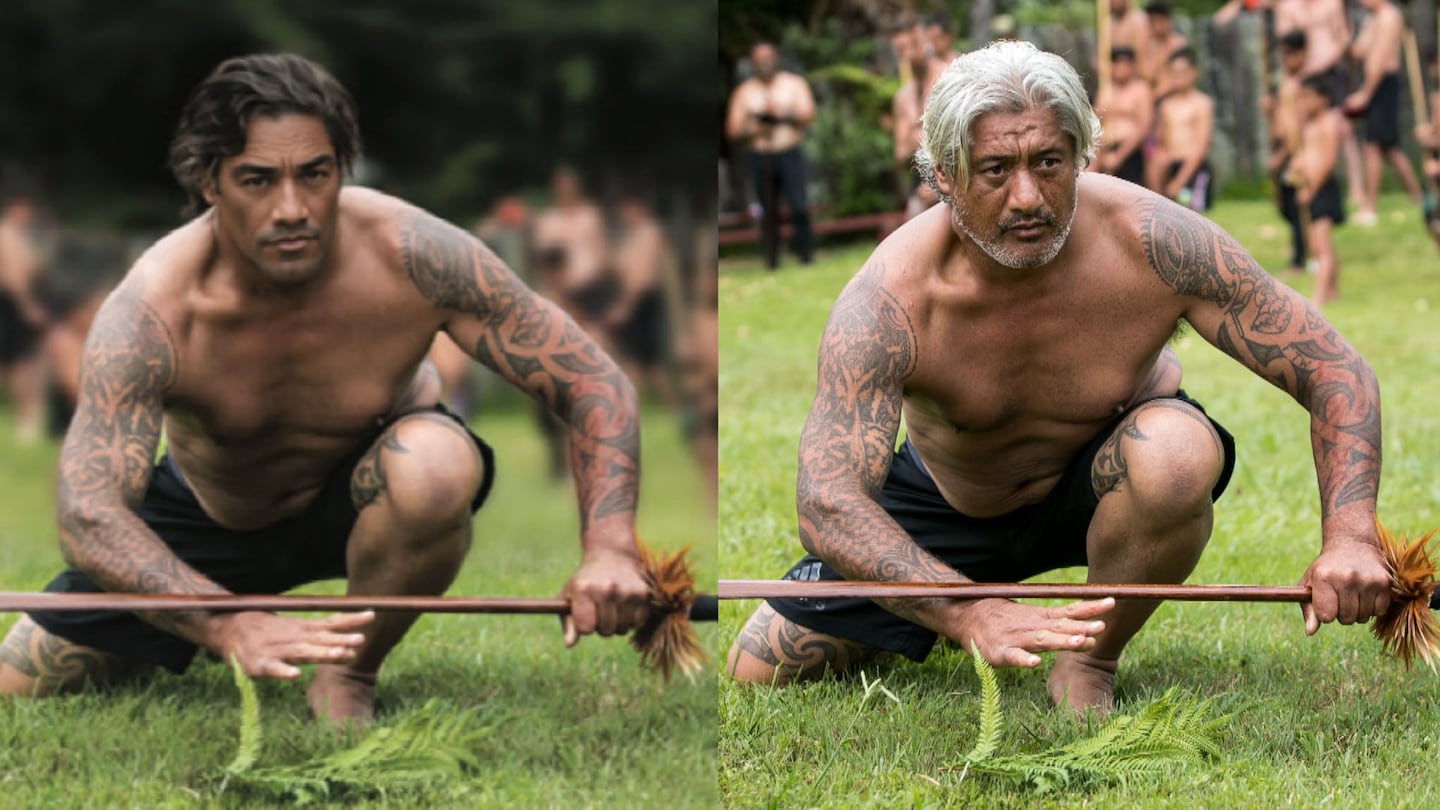Hope Project coordinator and Shining Lights Trust director Dave Mann says he has recalled “somewhere over 300,000″ Easter pamphlets that featured another Māori man’s head imposed on kaumatua Pat Mohi’s body pictured during a traditional challenge.
But the rest of the pamphlets had already been sent out to 3000 churches nationwide and couldn’t be retrieved.
“We’ve been even getting rid of them in our office, just so there’s none left, that sort of the thing. We would like this in the past.”
A month ago the Hope Project circulated a religious pamphlet across the motu for Easter, featuring a tāne māori wielding his taiaha. The group was happy with its pamphlet until it found out a graphic artist had altered an existing photo of Pat Mohi issuing a challenge but replacing his head with another man’s image.
The original photo had been taken by Mohi’s nephew, photographer Te Rawhitiroa Bosch. It was taken on the sacred island of Mokoia at a traditional Māori martial art weaponry school, a school Pat’s parents, Mita Hikairo and Hukarere Mohi, founded over 40 years ago so further knowledge of the artform would not be lost due to colonisation
Mohi (Ngāti Rangiwewehi, Te Arawa, Tūwharetoa, Ngāti Tarāwhai, Ngāti Pare) was startled by the altered photo in the pamphlet.
“The thing that got me the most were the people in the picture around me, especially my grandchildren and friends, The wero (challenge at a Pōhiri) itself, that position in particular is one that everybody adopts from our style. So I saw my father, I saw my nephews, I saw us all, combined, metaphorically within that position, but it was the people that were with me is what got me most.”
The Christian charity went viral over the manipulated image, and issued a written public apology to Mohi. And just last week Mann and church members traveled to Tarimano Marae, in Rotorua, to offer amends through a tikanga Māori-led process headed by the Mohi whānau.
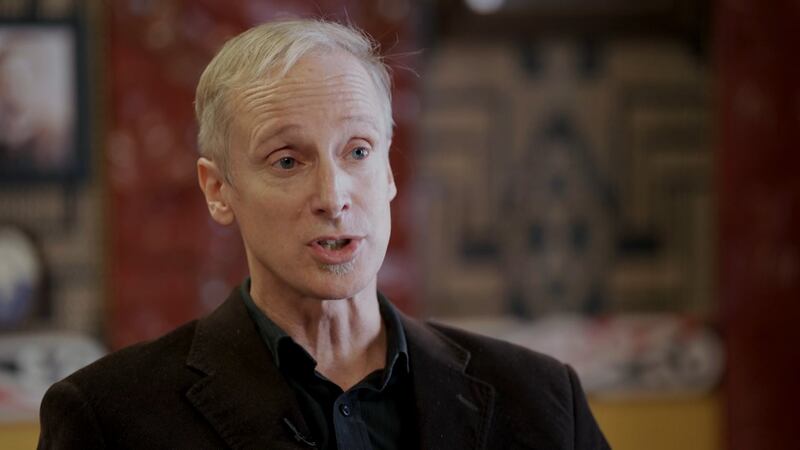
Mann says when they were alerted about the wrongdoing, they actively began to recall the Easter pamphlet that circulated across New Zealand via their 4000 volunteers.
“Unfortunately, our example is going to be the example of how not to do it. But then begging the question, you know, what do you need to know if you’re the CEO of an organisation, about what correct tikanga or protocol will be around graphics and about telling a story and really bringing that into the forefront,” Mann says.
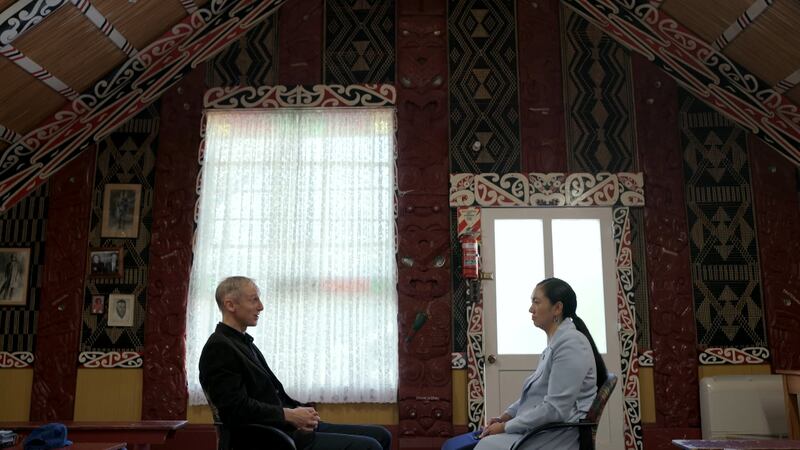
Despite being questioned on Te Ao with Moana by reporter Te Rina Kowhai about the exact process the original image had been taken through by the charity’s graphic artist, Mann responded that he wasn’t exactly sure. However, he did say artificial intelligence had played a part. Mann wanted to make clear that he was ultimately to blame as he led the project.
“We have really stuffed up. So, yeah, we called an emergency board meeting (a month ago) to work out what we were going to do and, and basically decided on a policy of trying to be trying to be open and honest.”
Mann said the Hope Project was a charity group representing the Christian faith but it had done wrong.
“We can’t do anything but be open and honest. We’ve stuffed up. But to then connect with those we had most offended, and probably within the process to let our actions speak more loudly than our words if we could.”
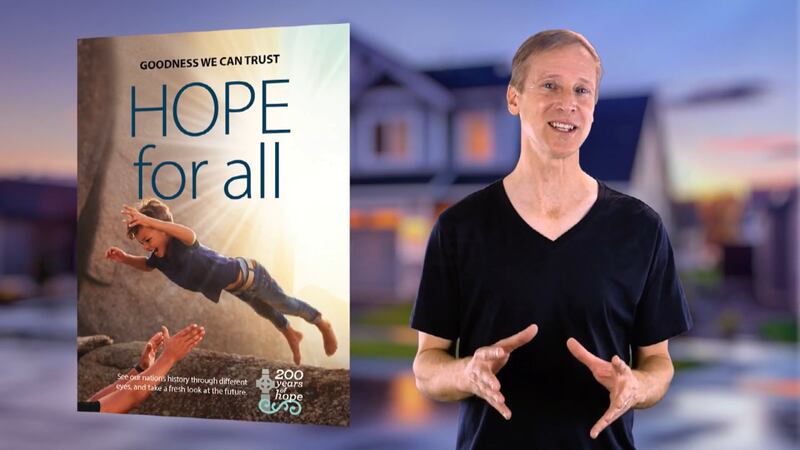
Bosch is gloomy saying, . “We can’t stop people stealing our imagery. And especially with AI and that, all that sort of stuff, we can’t actually stop it. We can keep vigilant for it.”
Bosch says Māori and Māori artists need to learn more about copyright law.
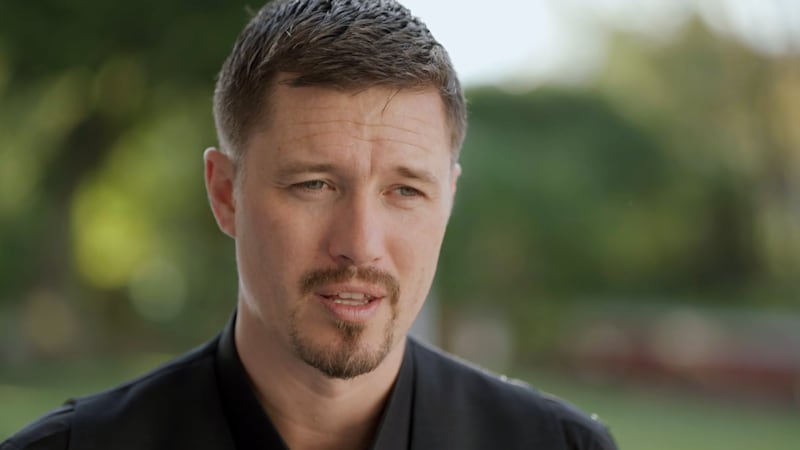
“I think that that could be one kaupapa (subject) we can really dive into, so that we all know, and there’s a shared understanding of that sort of stuff, so we can back each other up.”
Pat Mohi’s sister, Aramoana Mohi-Maxwell, was among the many whānau members distraught about the manipulated image. She says through the kanohi-ki-te-kanohi (face-to-face) tikanga-led approach, she and the Mohi whānau have found closure.
“If people are gonna be sorry, you don’t have to rub their nose in it, cause the ‘sorry’, if it’s pono (true) and tika (accurate) you’re gonna feel it and see it. And that’s essentially what we saw on the messages that were sent to us. But then today, you sort of get at another level,” Mohi-Maxwell says.
Pat Mohi says “The picture’s me, it belongs to me. There’s a lot of hours and hours worth of artwork in my body that have been invested, through my sisters, through the tattoo artists, through the moko artist. There are scars in there that only I have, and they tell awesome stories about my life. I just wanted to make sure my family were okay, that’s it. So it’s been a positive outcome.”
Watch the exclusive interview with Pat Mohi online on Te Ao with Moana.

